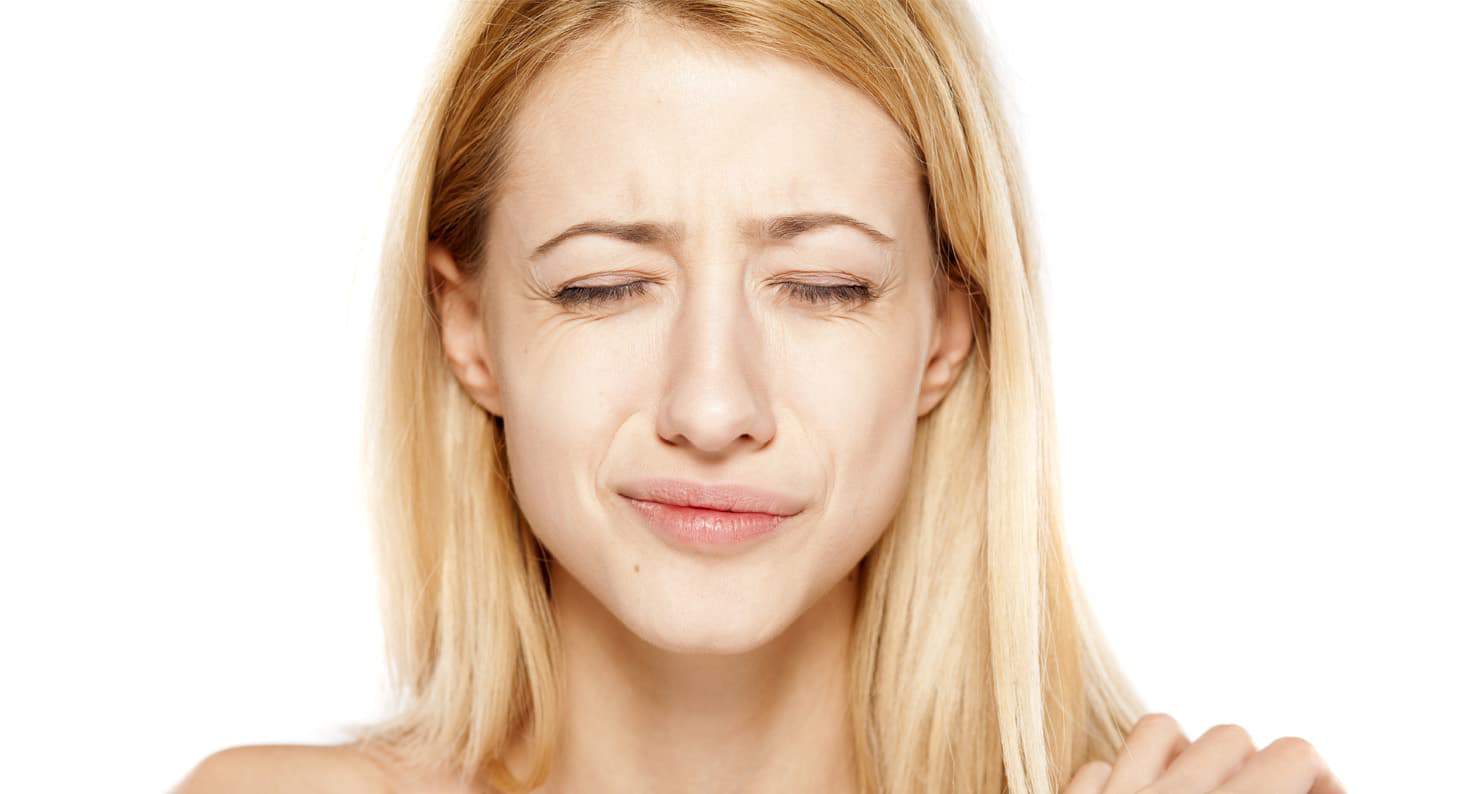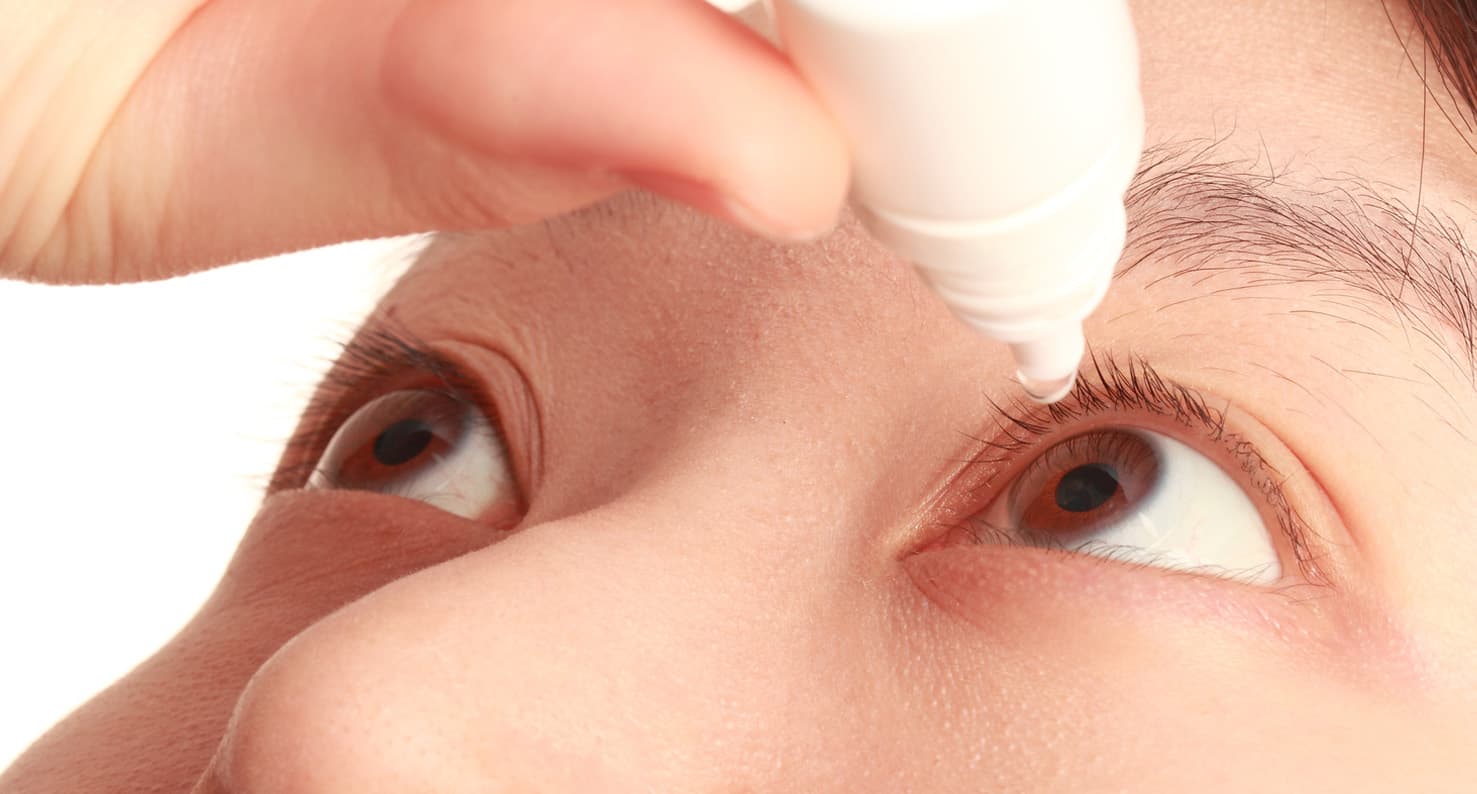Mask Associated Dry Eye – What It Is And Ways to Combat It
Published by on May 4, 2021
Do You Have Mask Associated Dry Eye (MADE)?
Since the COVID-19 pandemic first made its way across the United States in early 2020, eye doctors have seen a rise in dry eye. There appears to be some link to the reliance on masks as a necessary health measure. At Kugler Vision in Omaha, Nebraska, we fully support the use of masks to help slow and prevent the spread of COVID-19. However, we also want to help those who are experiencing this unique cause of dry eye, known as MADE. MADE stands for “mask-associated dry eye.” Let’s dive into the link between mask wearing and dry eye and what can be done for it.
What Is MADE?
MADE, or mask-associated dry eye, is the term used to describe dry eye that is caused or worsened by mask wearing. Essentially, as you breathe into your mask, air is blown upward when you exhale. This air escapes out of the top of the mask and into your eyes.
These consistent puffs of exhaled air into the eyes can cause or worsen red eyes, and even contact lens intolerance (CLI) and ocular inflammation. Mask-associated dry eye is a relatively new condition, and it’s important to point out that there’s very limited scientific literature on this. So the exact cause hasn’t been extensively studied. A July 2020 article from Ophthalmology and Therapy covered the observed link between regular mask wearing and increased dry eye.
 Common Symptoms of Dry Eye
Common Symptoms of Dry Eye
If you’ve noticed yourself experiencing dry eye symptoms on a regular basis, it may be time to get evaluated by experts in dry eye. At Kugler Vision, our team is able to assess the amount and quality of your tears to determine whether dry eye treatment is needed.
Some common symptoms of dry eye are:
- An inability to tolerate contact lenses in the eye (often directly related to contact lens intolerance, or CLI)
- General eye irritation
- A stinging or burning sensation
- Scratchiness or itchiness of the eye
- Fluctuations or vision changes
- Tearing up when trying to focus on activities like reading, playing sports, or driving
- Tired eyes, especially after using a computer or wearing a mask for prolonged periods
If you suspect you may have dry eye, our easy self-test is a great place to start as you research. Take the test at the button below.

How to Tell if Dry Eye Is MADE
If you have noticeable increases in dry eye symptoms after wearing a mask for an extended period of time, you have good reason to believe your dry eye is linked to MADE.
However, many of our collective habits have adjusted over the course of the pandemic, so it can be tricky to nail down just how much of this uptick in dry eye can be attributed to to MADE, and how much is related to an increase in screen time or the average dry eye disease or contact lens intolerance. Each year, over 20 million people stop wearing contact lenses because their eyes begin to reject them – this is known as contact lens intolerance.
Wondering if you have CLI? Take our 60-second CLI quiz at the button below.

This difficulty in distinguishing between how much dry eye is from masks and how much could be from increased screen time makes it tough to say just how prevalent MADE is, but it’s a logical assumption that both are contributors.
I’ve Been Experiencing Dry Eye – What Do I Do?
Over-the-counter lubricating drops may provide some temporary relief. During the COVID-19 pandemic, do continue to wear your mask. However, if you’re experiencing increased dry eye, it’s also time to make a call to your eye doctor to discuss your concerns.
Your doctor may prescribe some drops that are more specific to your individual needs, or they may prescribe omega-3 supplements to help support healthy lipids. They may also advise you to try warm compresses and moist heat. At Kugler Vision, we offer the Bruder Hydrating Eye Mask for this purpose. You may also be advised to stay out of contact lenses for a period of time, or to consider a long-term solution to make contact lenses unnecessary, such as LASIK vision correction.
In fact, since the pandemic, LASIK has soared in popularity across the country. The American Refractive Surgery Council has reported a 16.3 percent increase in the number of LASIK procedures in the last quarter of 2020.
 More Help for Dry Eyes – LipiFlow and BlephEx
More Help for Dry Eyes – LipiFlow and BlephEx
At Kugler Vision, we’re proud to offer both LipiFlow and BlephEx – two effective and safe treatments for the management of dry eye. Learn the basics on these two dry eye treatments:
- LipiFlow is a popular and effective procedure to treat dry eye. It uses gentle heat and pulses to massage the meibomian glands, which are responsible for producing the lipids (oils) needed to keep tears from evaporating too quickly. LipiFlow is often found to be a good match for those who have what is known as evaporative dry eye. LipiFlow is performed in the office.
- BlephEx treats both blepharitis and dry eye. BlephEx is another comfortable, in-office procedure. During BlephEx, our experts use a specialized handpiece to carefully and precisely clean along the edge of your inner eyelids and your lashes. This treatment exfoliates the inner eyelid – an area of the body that is rarely, if ever, cleaned.
 Dry Eye Relief Is in Sight – Let Us Help
Dry Eye Relief Is in Sight – Let Us Help
If the dry eye symptoms described in this post sound familiar, and you believe you are suffering from dry eye, it’s time to learn more about how our dry eye treatments can help. Contact our team of experts at 402.558.2211 to schedule a VisionTrack consultation to evaluate your individual needs. At Kugler Vision, our dry eye experts want to help you find relief.

Lance Kugler, MD, is a specialist in LASIK and vision correction surgery and CEO of Kugler Vision. A proud Omaha native, he is passionate about improving lives through clear vision. Dr. Kugler serves on several national boards, and his practice is recognized internationally as a center of excellence. Dr. Kugler is one of the original founders of the Refractive Surgery Alliance, an international organization comprised of over 350 of the world’s leading vision correction surgeons; he also served as its first president. In 2019, Dr. Kugler was selected as a TEDx speaker, and delivered a talk in Omaha about the worldwide epidemic of nearsightedness and refractive solutions. Dr. Kugler is an Associate Professor of Refractive Surgery at the University of Nebraska Medical Center’s Truhlsen Eye Institute, has been published in many medical journals, and participates in numerous clinical studies to advance the field of vision correction surgery. Additionally, Dr. Kugler is proud to be a Board Certified Fellow of the World College of Refractive Surgery & Visual Sciences. Dr. Kugler and his wife are proud parents to five active kids. When he has a spare moment, he enjoys skiing, tennis, travel, and fine coffee.




Leave a Reply